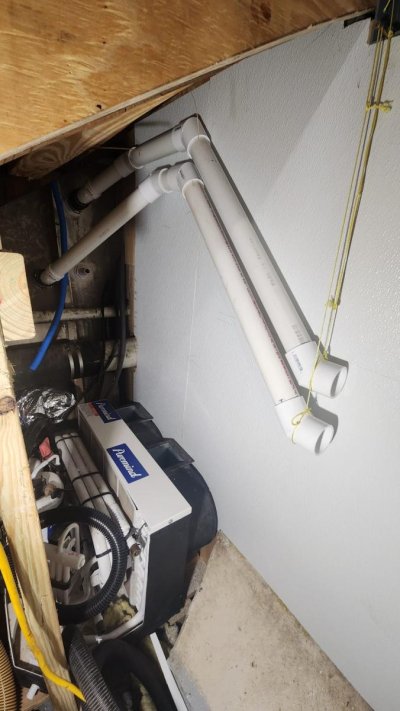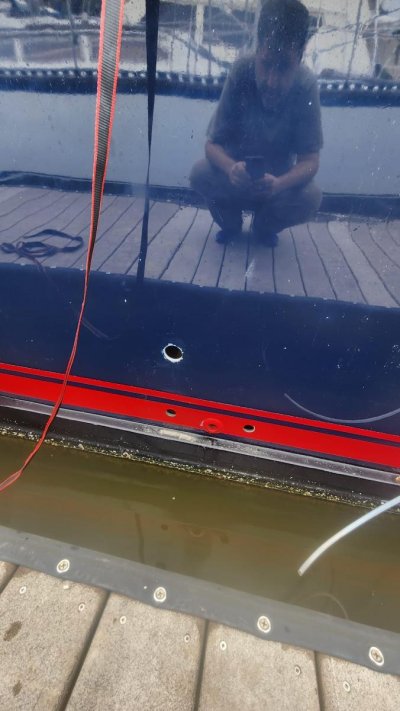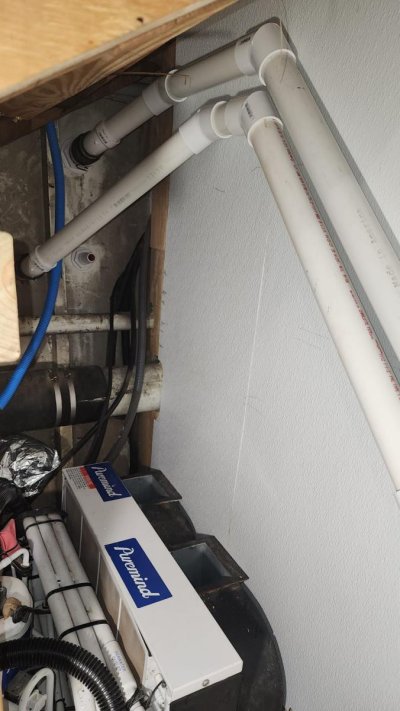Was wondering about bilge pump pipe systems. I am currently installing 10 bilge pumps. 5 normal, 5 high water. The normal ones are 3700 gph, and the high water ones are 6600 gph. I was wondering about the output of them to the thru hulls. I am using PVC, sch 40, hooked to the thru hulls via rubber adapters, the same type of adapter is being used from the pump to the lines. My question is do I need to have the pipes go up some, like in my photo attached, before going down, or is it safe to have them level or a slight incline upwards before dropping down to the bilge pumps? Thru hulls are above the water line. Normal is maybe 12 to 14 in above the water line. High water is maybe 24 to 30 in. Another photo shows the approximate location for this set of thru hulls.
I was also wondering if PVC is an ok choice for this application given it is isolated from the hull and pump via the rubber adapters. And any additional input on this? My boat originally had 2 bilge pumps. The 5 areas are essentially sectioned off from each other. Ball valves will be installed as well
Thank you in advance.
I was also wondering if PVC is an ok choice for this application given it is isolated from the hull and pump via the rubber adapters. And any additional input on this? My boat originally had 2 bilge pumps. The 5 areas are essentially sectioned off from each other. Ball valves will be installed as well
Thank you in advance.
Attachments
-
 WhatsApp Image 2023-12-01 at 21.07.00_caec6aa1.jpg101 KB · Views: 52
WhatsApp Image 2023-12-01 at 21.07.00_caec6aa1.jpg101 KB · Views: 52 -
 WhatsApp Image 2023-12-01 at 21.07.00_aa1eb9dc.jpg75.2 KB · Views: 50
WhatsApp Image 2023-12-01 at 21.07.00_aa1eb9dc.jpg75.2 KB · Views: 50 -
 WhatsApp Image 2023-12-01 at 21.07.00_39e060dd.jpg74.5 KB · Views: 49
WhatsApp Image 2023-12-01 at 21.07.00_39e060dd.jpg74.5 KB · Views: 49 -
 WhatsApp Image 2023-12-01 at 10.44.18_cb2fe391.jpg94.5 KB · Views: 47
WhatsApp Image 2023-12-01 at 10.44.18_cb2fe391.jpg94.5 KB · Views: 47 -
 WhatsApp Image 2023-12-01 at 21.07.00_4799745c.jpg110.4 KB · Views: 49
WhatsApp Image 2023-12-01 at 21.07.00_4799745c.jpg110.4 KB · Views: 49
